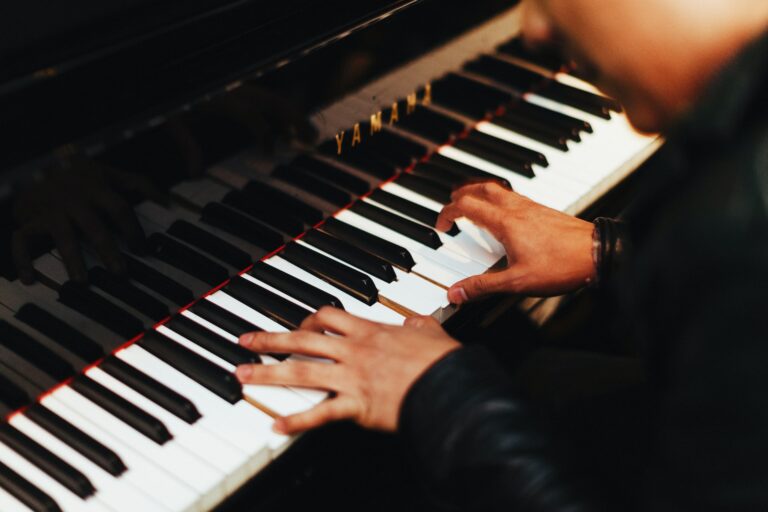Piano’s Anatomy
It’s a beautiful day to learn about the piano, people (any Grey’s Anatomy fans out there?). The piano is much more complex than you may think, so let’s scrub in and dissect the structure of this grand instrument.
Interior
We’re going to grab the scalpel first and open up the piano to look at the interior. What you’ll see is a soundboard, frame, rim, pins, bridge, strings, dampers, agraffes and hammers on the interior of a piano.

- The soundboard works as the piano’s amplifier and is the large wooden piece.
- The bridge connects the strings to the soundboard to transfer the vibrations. It looks like a miniature bridge running horizontally across the interior.
- The cast-iron frame is the largest part of the instrument and is responsible for the tension of the strings.
- The inner rim supports the soundboard and pinblocks.
- The pins are steel cylinders connected to the strings, which will tune the piano. There are wooden pinblocks to hold the pins in place when the instrument is being tuned.
- The damper is a pad that will stop a note or allow it to continue depending on what the pianist does with the pedals.
- The agraffe is a brass piece with holes going through it to hold the strings to the frame.
- You can find about 230 strings on the interior of a piano. They range in length and thickness and will vibrate when the hammer strikes them.
- Finally, you can see 88 felt-covered hammers. The hammers strike the strings to create a sound when a key is pressed.
Now that we’ve closed up the interior of our patient, let’s examine the exterior.
Exterior
The keyboard will be the first thing you notice when looking at the exterior. It’s what the musician will have the most interaction with and is composed of 88 keys that are attached to the strings on the interior. The 36 short, black keys are the flats/sharps and the 52 white keys are called “naturals”. The fallboard is the piece that comes down to protect the keys when it’s not being played.
There’s also the lid, which can be propped open to produce a louder sound. The music desk is an eye-level shelf for pianists to set their music sheets. The outer rim is what holds the interior together.
Now let’s move on to the pedals. You’ll notice three pedals, although some pianos only have two. There’s the sustain/damper, sostenuto and the soft pedal. The sustain pedal is the right pedal that controls the dampers. The sostenuto pedal is the middle pedal and will sustain the notes that are being held down. The soft pedal is the one to the left and will modify the timbre and volume.
Finally, you’ll notice the casters attached to the legs of the piano. The casters are wheels that make moving the instrument much easier.
Hopefully this dissection helped to explain what goes on inside and outside the piano.
*This dissection was performed on a cadaver instrument. No pianos were harmed in this exploratory blog*







